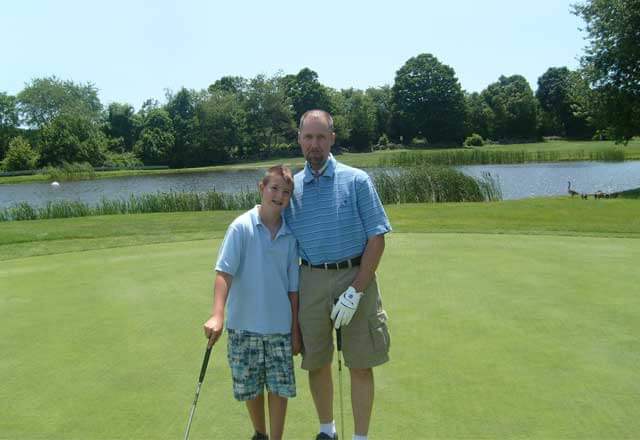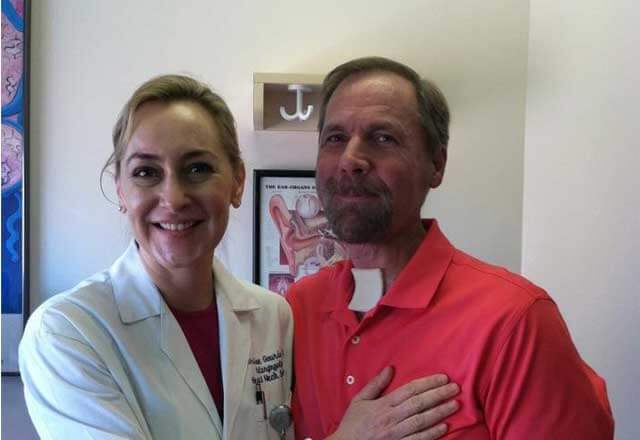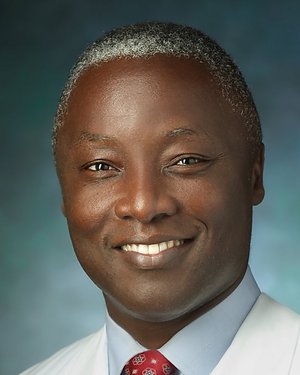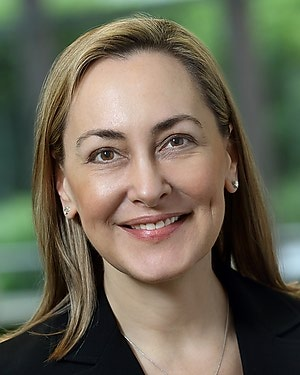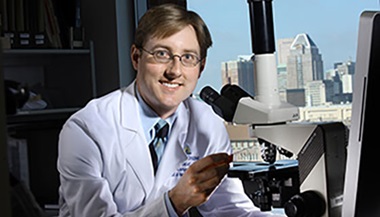Patient Story
Oral, Head and Neck Cancer: Steve's Story
I truly believe getting cancer saved my life — I know that sounds strange, but I believe it did."
Stress at work had taken its toll and Steve’s weight ballooned from what he calls his “fighting and playing weight.” He often didn’t feel well.
In November of 2007 he developed a sore throat. “I didn’t pay much attention to it because it seemed like I always caught a cold or lost my voice around that time of year,” the life-long northern Virginia resident says. A week later, he not only experienced a sore throat but felt like something like a piece of food was stuck in his throat. After several trips to his primary care physician, he was referred to an otolaryngologist (also known as an ENT).
Using a scope (a small thin camera) to see down his throat, they discovered a golf ball-sized tumor at the base of his tongue. Biopsy results a week later confirmed the worst — Steve had cancer.

These days, Steve is back doing much of what he loves, including fishing.
Stifling Cancer’s Stronghold
It took a while for that to sink in. My first thought was, ‘Holy crap, I’m going to die. I’m too young for this,’” Steve says. He thought of his wife and their two children, and then his thoughts transitioned to action. “OK, how do I fix this?” he recalls. This entire thought process flashed through his mind in a matter of seconds while he sat in front of the ENT who was delivering the news of his diagnosis.
Steve, who had never smoked, had HPV+ cancer at the base of his tongue. Under the care of a radiologist he underwent chemoradiation and had a feeding tube and medical port installed. His treatment consisted of three double doses of chemotherapy (one treatment every three weeks) and 35 radiation treatments (20 minutes a day, five days a week).
I was always the 'tough as nails, nothing can hurt me' kind of guy."
HPV Vaccine: Not Just for Girls
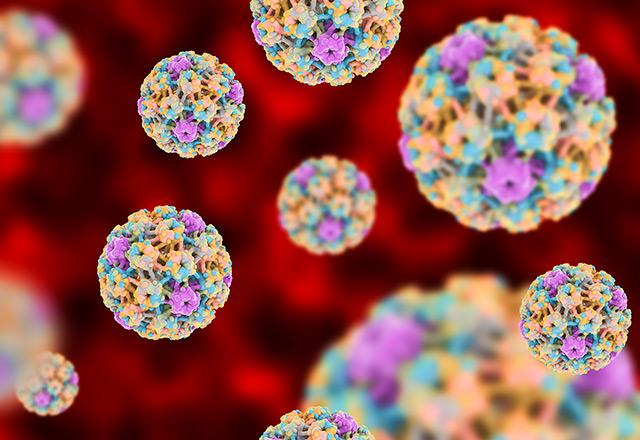
Steve lost 85 pounds during the four months of chemoradiation and couldn’t swallow. He was referred to a speech-language pathologist, “After the treatments, it looked like the tumor was gone,” Steve remembers. But sadly, by that summer, the cancer returned.
Nine months after receiving his cancer diagnosis, Steve’s ENT and radiologist referred him to head and neck cancer specialist Christine Gourin, M.D. Steve’s only option for survival was to remove his tongue and several lymph nodes that had become consumed by the cancer. Together, Dr. Gourin and facial reconstructive surgeon Kofi Boahene, M.D., removed his tongue and replaced the tissue with a flap from muscle in his thigh.
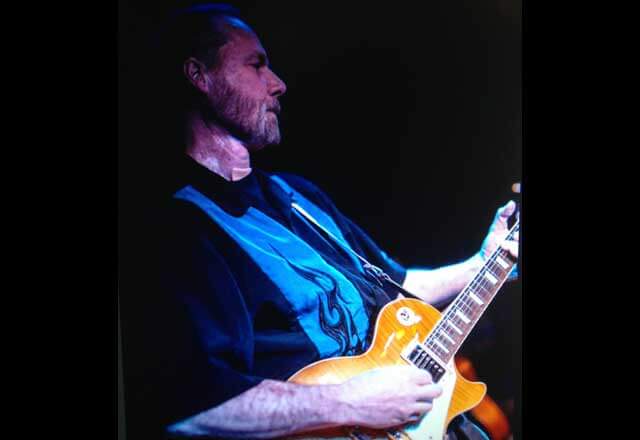
"This was a tough one to take. Knowing I'd never speak or sing again... recovery was hard."
Following his recovery, Steve continues to enjoy playing music with his band. Though he can't sing, he occasionally lip syncs backup vocals while playing guitar.
Steve spent several days in recovery, where he was cared for by Carol Maragos, M.S.N., C.R.N.P., C.N.O.R., and Alyson Stolba, R.N. “They along with the rest of the staff were just wonderful to both myself and my family,” Steve remembers.
Two weeks later, after reviewing Steve’s test results, Dr. Gourin delivered unfortunate news: Steve would also need his larynx (voice box) removed. “This was a tough one to take. Knowing I’d never speak or sing again was pretty hard,” Steve says. He had always been the one with a story, joke or a song.
He underwent additional surgery to remove his larynx. “Recovery was hard,” he recalls. Going from a man who could bench press 320 pounds to not being able to lift his arms above his head — and at times, even hold his head up straight — was taxing. It was also difficult for his wife and kids. “I hated to see them have to see me that way,” he says. But it was only a matter of days before his family was back to making fun of him and giving him grief for his terrible handwriting — a welcome return to normal.
A New Normal
I did my therapy and walking and slowly got back to what I call my new normal."
A lot has changed, but mostly life is the same. “I feel healthier than before,” he reflects.
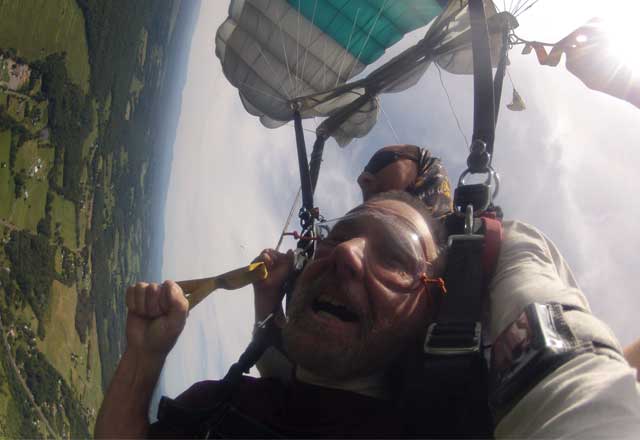
Steve and his son went skydiving in August of 2015 just before his son went off to college.
Old friends remained and Steve made many new friends along the way. He lost his voice but gets across his words with ease using an app that turns typed text to speech, “And when I’m mad I just type in all caps,” he jokes. He’s still able to eat all his favorite foods as long as he takes very small bites and washes every bite down with fluids. However, he prefers to pulverize most of his foods in a blender because he is able to eat more. Steve eats everything from steak to cereal this way.
Steve’s had to make other modifications to his life as well. “I can’t create suction to drink from a straw and can’t blow my nose,” he says. He breathes through a stoma, so he can’t go swimming without risk of drowning, “but I don’t snore and Kim loves this,” he says, referring to his loving wife of over 30 years. His golf game has improved and Steve plays guitar for a band. They play shows for more than 200 people in the Washington, D.C. metro area. Steve and his son Peter even went skydiving together last year. “I truly believe getting cancer saved my life — I know that sounds strange, but I believe it did,” Steve says.
[Dr. Gourin] and Hopkins saved my life for which my family and I are forever grateful."
“[Dr. Gourin] and Hopkins saved my life for which my family and I are forever grateful,” he says. Steve regularly talks to patients with head and neck cancers: “It’s the least I can do to pay it forward or pay it back.” He’s developed friendships with many of these people, along with his care team at Johns Hopkins, with whom he’s often texting or emailing. He is a regular fixture in Dr. Gourin’s office, offering guidance, compassion and humor to those undergoing treatment. “He is amazing,” Dr. Gourin beams.

Steve poses for a photo with Kim Webster and Carol Maragos at a concert where he and his band performed. Along his journey, many of his care providers have become dear friends.
"They along with the rest of the staff were just wonderful to both myself and my family."
Steve's Treatment Team
Head and Neck Tumor Center
The treatment of head and neck tumors is complex. At Johns Hopkins, our care goes beyond addressing the tumor. Our multidisciplinary team of cancer specialists is dedicated to treating your tumor with your overall health and life goals in mind.

